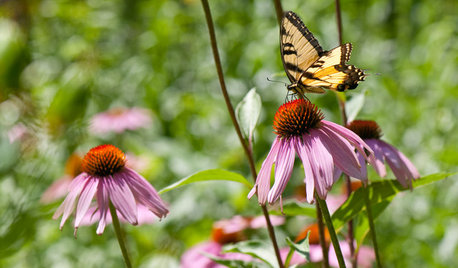Buttonbush/Cephalanthus occidentalis
MissSherry
14 years ago
Related Stories

GARDENING GUIDESGreat Design Plant: Cephalanthus Occidentalis
Buttonbush is an adaptable woody shrub with delightful pincushion flowers
Full Story
LANDSCAPE DESIGN5 Steps to Selecting the Right Plants for a Rain Garden
A simplified look at selecting plants for a rain garden
Full Story
GARDENING GUIDESEntice Eastern Tiger Swallowtails With Summer Flowers
Grow nectar-rich native bloomers and larval host plants for these endearing butterflies
Full Story
GARDENING GUIDESGarden-Friendly Native Alternatives to Overplanted Exotics
There are lots of gorgeous, wildlife-friendly native plants ready to make an appearance in your garden
Full Story
GARDENING GUIDESHow to Stop Worrying and Start Loving Clay Soil
Clay has many more benefits than you might imagine
Full Story






zoozue
MissSherryOriginal Author
Related Professionals
Norfolk Landscape Architects & Landscape Designers · Panama City Landscape Architects & Landscape Designers · Burlington Landscape Contractors · Camp Verde Landscape Contractors · Point Pleasant Landscape Contractors · Salmon Creek Landscape Contractors · Shoreview Landscape Contractors · Burbank Fence Contractors · Fort Worth Fence Contractors · Orlando Fence Contractors · Pekin Fence Contractors · Sacramento Fence Contractors · Selden Fence Contractors · Arlington Window Contractors · Cutler Ridge Window Contractorszoozue
butterflymomok
bananasinohio
zoozue
MissSherryOriginal Author
zoozue
hemnancy
MissSherryOriginal Author
janetg57
jock.stender
susanlynne48
KC Clark - Zone 2012-6a OH
jock.stender
terrene
MissSherryOriginal Author
susanlynne48
MissSherryOriginal Author
terrene
bananasinohio